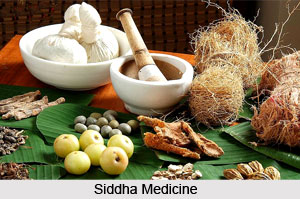The scales of weights and measures used in ancient days differed in different parts of the country. Separate scales are described by modern compilers, under the names of Magadhi, Kalinga, Charaka, Sushruta, etc. The number of Gunjas making a Tola varies in these scales from 40 to 96. The scale of weights and measures in ordinary use in Bengal, at the present day, has the gunja, (seed of Abrus precatorius) for its lowest weight. The gunja, however, is divided into fractional parts by other seeds, thus 18 mustard seeds, 4 grains of paddy, 3 grains of barley and 2 grains of wheat are respectively said to be equal to one gunja. This scale is as follows:-
6 Gunjas make one Ana
12 Gunjas make one Masha
8 Mashas or 16 Anas make one Tola
8 Tolas make one Pala
8 Palas or 64 Tolas make one Seer
2 Seers make one Prastha
8 Seers make one Adhaka
32 Seers make one Drona
100 Palas or 12 and a 1/2 Seers make one Tula
When a fluid article is ordered in measures of a prastha or 2 seers and upwards, twice the quantity mentioned should be taken. Thus if in a preparation it is stated, take solid paste of certain substances 1 seer, oil 2 seers, and water 8 seers, the quantities actually taken are solid paste 1 seer, oil 4 seers and water 16 seers. In measures below 2 seers or in those indicated by pala such as eighty palas, sixty palas etc., the quantities are not doubled.
Doses of Medicines
The doses of medicines are not fixed. They are regulated by the age, strength, and digestive power of the patient, the nature of the illness, the state of the viscera and humours, and lastly by the properties of individual drugs.
Supposing the full dose, of a medicine for adults to be 2 tolas, the doses for children of different ages would be as follows :- For infants a month old, 1 gunja, and an additional gunja for each additional month. For children a year old, the dose would be 1 masha or 12 gunjas, and an additional masha for every year, till the full dose of 16 mashas or 2 tolas is reached at the 16th year. From 16 to 70 the full dose should be used, after which it should be again gradually reduced. When infants are unable to take decoctions and other bulky medicines, their nurses are made to take them. Sometimes small quantities of medicines are applied to the nipples, and the infants made to suck them.
Medicines may be administered during four periods of the day, namely, sunrise, mid-day, evening and night. Sometimes they are administered frequently. Morning is regarded as the best time for administering such medicines as purgatives, emetics, deflections and pills which are generally given once daily. When no specific direction is given regarding the time of administration, morning must be taken for granted. Very often one sort of medicine is given in the morning and another in the afternoon. Some medicines for dyspepsia are given before, along with, and after meals.
Related Articles
Ayurveda
History of Ayurveda
Origin of Ayurveda
Ayurveda Medication
Principles Of Ayurveda
Elements of Ayurveda
Concepts of Ayurveda
Branches of Ayurveda
Ancient Literature of Ayurveda
Sushruta




















